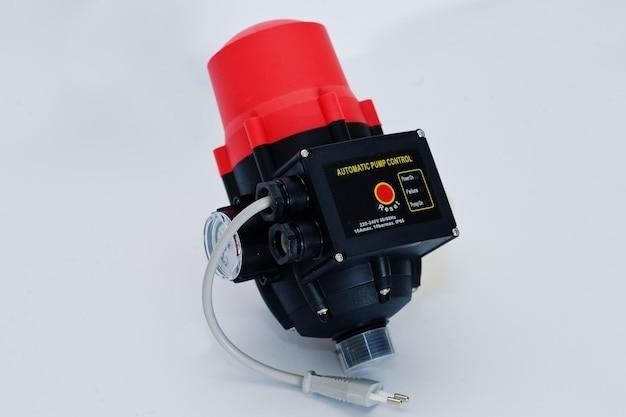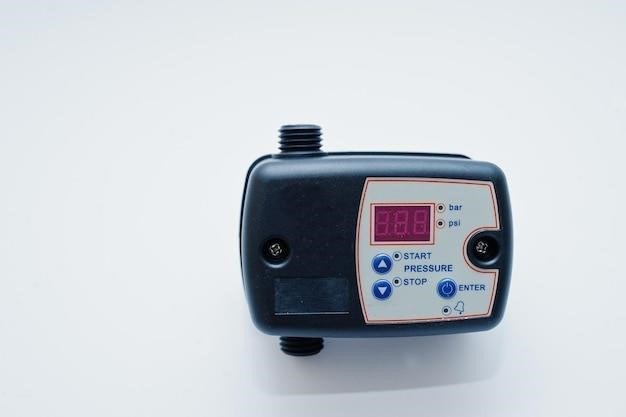CADD-Solis Pump⁚ Overview and Functionality
The CADD-Solis ambulatory infusion pump delivers measured drug therapy to patients in various settings. It’s designed for patient mobility and ease of use, overseen by healthcare professionals.
Key features include a portable design, intuitive interface, and various delivery modes (continuous, bolus, PCA). Benefits include improved patient mobility and reduced clinician visits.
Pump Overview and Intended Use
The CADD-Solis Ambulatory Infusion Pump is a versatile medical device designed to administer medication to patients in a variety of healthcare settings, including hospitals and outpatient clinics. Its primary function is the precise and controlled delivery of fluids and medications, catering to both adult and pediatric patients across diverse clinical areas such as post-operative care, trauma units, critical care, oncology, and labor and delivery. The pump’s compact and portable design promotes patient mobility, allowing for greater freedom and comfort during treatment. This system enhances patient care and safety by providing accurate medication delivery while minimizing the need for constant monitoring. The CADD-Solis pump is intended for use under the supervision of a qualified healthcare professional, ensuring safe and effective medication administration. Always refer to the complete operator’s manual for detailed instructions and safety precautions before using the device. Proper training and adherence to guidelines are crucial for optimal results and patient well-being.
Key Features and Benefits of the CADD-Solis System
The CADD-Solis system boasts several key features that contribute to its efficacy and user-friendliness. Its compact and lightweight design ensures portability, allowing patients to maintain mobility during treatment. The intuitive interface, featuring color-coded screens and helpful prompts, simplifies operation and reduces the learning curve for both clinicians and patients. The system supports various medication delivery modes, including continuous infusion, intermittent boluses, and patient-controlled analgesia (PCA), providing flexibility to accommodate diverse therapeutic needs. The integrated PharmGuard Medication Safety Software further enhances safety by providing drug library verification and preventing medication errors. The CADD-Solis pump’s advanced features, such as occlusion detection and alarm systems, provide real-time monitoring and alert clinicians to potential issues. These features collectively contribute to improved patient outcomes, reduced hospital stays, and enhanced overall efficiency in medication delivery, ultimately leading to better patient care and satisfaction.

Setting Up and Operating the CADD-Solis Pump
Attach the medication cassette, ensuring secure connection. Prime the tubing to eliminate air, following the instructions in the user manual.
Input the prescribed medication details⁚ rate, volume, and delivery method (continuous, bolus, or PCA).
Connecting the Cassette and Priming the Tubing
Before initiating therapy, carefully connect the medication cassette to the CADD-Solis pump. Ensure the cassette is properly aligned and latched securely; refer to the diagrams in your user manual for visual guidance. A misaligned or improperly latched cassette may lead to malfunction or inaccurate medication delivery. After securing the cassette, proceed to prime the tubing. This crucial step removes air bubbles from the lines, ensuring uninterrupted and accurate medication flow to the patient. To prime, follow the step-by-step instructions provided within your CADD-Solis pump user manual. These instructions often involve a series of actions to purge air from the system, such as gently squeezing the tubing or using a specific priming technique. Always visually inspect the primed tubing for the absence of air bubbles. Any remaining air bubbles could compromise the accuracy of the infusion. If air bubbles persist after the priming process, carefully repeat the procedure, consulting your user manual for troubleshooting guidance if necessary. Remember, accurate priming is essential for patient safety and treatment efficacy.
Programming the Pump for Medication Delivery
Programming the CADD-Solis pump involves entering the necessary medication parameters to ensure accurate and safe drug delivery. Begin by selecting the correct medication from the pump’s drug library or manually inputting the medication details if necessary. Double-check all entries to avoid errors. Next, input the prescribed dosage, ensuring accuracy; any mistake in this step could have serious consequences. Specify the infusion rate, considering the medication’s properties and the patient’s condition. The pump typically offers options for continuous infusion, intermittent boluses, or patient-controlled analgesia (PCA). Select the appropriate delivery mode according to the prescribed treatment plan. After entering all parameters, the pump will likely display a summary screen for final verification. Carefully review all entered data before initiating the infusion. If any discrepancies are noted, correct them immediately before proceeding. Always consult the comprehensive user manual for detailed instructions and guidance on programming the CADD-Solis pump for specific medication delivery scenarios. Accurate programming is crucial for patient safety and treatment success.

CADD-Solis Pump⁚ Troubleshooting and Maintenance
The CADD-Solis pump features various alarms indicating potential issues. Consult the manual for troubleshooting specific error codes and recommended actions.
Regular cleaning and disinfection are crucial. Refer to the manual for proper procedures and instructions on battery replacement.
Addressing Common Pump Errors and Alarms
The CADD-Solis pump incorporates a comprehensive alarm system to alert clinicians and patients to potential problems during medication delivery. These alarms are categorized by severity, with high-priority alarms demanding immediate attention. Common alarms include air-in-line detection, low battery warnings, occlusion alarms signaling a blockage in the tubing, and various cassette-related errors such as improper attachment or damage. Understanding the meaning of each alarm is critical for prompt and effective response. The user manual provides a detailed explanation of each alarm code, including its cause and recommended troubleshooting steps. Always refer to the user manual for detailed instructions, as attempting to resolve alarms without proper guidance can lead to medication delivery errors or patient harm. In case of persistent or recurring alarms despite troubleshooting efforts, contact Smiths Medical customer service or a qualified biomedical technician for assistance. Accurate interpretation and timely resolution of alarms are paramount for ensuring the safety and efficacy of medication delivery. Remember, patient safety is the top priority.
Cleaning, Disinfecting, and Battery Replacement
Regular cleaning and disinfection of the CADD-Solis pump and its accessories are crucial for maintaining hygiene and preventing infection. After each patient use, clean the pump’s exterior with an appropriate disinfectant solution, following the manufacturer’s instructions precisely. The user manual provides specific guidelines on cleaning procedures to ensure effective removal of contaminants. Reusable components should be cleaned and disinfected according to hospital protocols for reusable, non-critical medical devices. Failure to follow these guidelines can lead to serious patient infections. Battery replacement is also a vital aspect of pump maintenance. The pump uses AA batteries or a rechargeable battery pack; consult the user manual for the correct battery type and replacement procedure. Always use fresh batteries of the same type to avoid affecting the low battery alarm functionality. Inspect batteries for damage before insertion. Never mix new and old batteries. Proper battery maintenance ensures uninterrupted medication delivery and prevents unexpected pump shutdowns.
Safety Precautions and Regulatory Information
Always follow the manufacturer’s instructions. Misuse can cause serious harm. Ensure proper training before use.
The CADD-Solis pump meets all relevant safety and regulatory standards for medical devices.
Important Safety Warnings and Precautions
Before operating the CADD-Solis pump, carefully review the complete instruction manual provided by the manufacturer. This device is intended for use by trained healthcare professionals and should only be used under their supervision. Improper use can lead to serious complications or even death for the patient. Always ensure the pump is properly connected and functioning correctly before initiating medication delivery; Regularly inspect the tubing and cassette for any signs of damage or leakage. Never attempt to repair or modify the pump yourself; instead, contact Smiths Medical or an authorized service center. Observe the pump’s alarms and alerts and take appropriate action as described in the manual. Maintain a clean and sterile environment during operation to prevent contamination. Dispose of used supplies appropriately according to local regulations. Always verify medication and programming settings before initiating therapy. If you are unsure about any aspect of the pump’s operation, contact medical support for assistance. Always use only the approved cassettes and accessories. Mixing new and used batteries is not recommended and may affect the pump’s performance. Regular battery inspection is vital to ensure optimal functionality and longevity.
Regulatory Compliance and Certifications
The CADD-Solis pump is manufactured to meet stringent international safety and quality standards. Specific certifications and approvals may vary depending on the region and model. Always refer to the latest version of the user manual for the most current regulatory information. The device has undergone rigorous testing to ensure its reliability and accuracy in medication delivery. Compliance with relevant medical device regulations ensures the safety and efficacy of the system. Smiths Medical adheres to strict manufacturing processes to maintain the highest quality standards. The pump is designed to meet the requirements of various regulatory bodies worldwide, ensuring its safe and effective use in healthcare settings. Documentation regarding certifications and regulatory compliance is typically included in the product packaging or can be obtained from the manufacturer’s website. Always check for updated certifications and compliance information before using the pump. This information is critical for ensuring that the device is suitable for its intended purpose and meets all necessary legal requirements. Contact Smiths Medical directly for specific details regarding regulatory compliance and certifications relevant to your region.
Advanced Features and Specifications
Understanding Different Delivery Modes (Continuous, Bolus, PCA)
The CADD-Solis pump offers flexible delivery modes⁚ continuous infusions, intermittent boluses, and patient-controlled analgesia (PCA).
Detailed technical specifications, including battery life, dimensions, and compatible accessories, are available in the full user manual.
Understanding Different Delivery Modes (Continuous, Bolus, PCA)
The CADD-Solis pump offers versatile medication delivery methods tailored to diverse patient needs and treatment plans. The continuous infusion mode provides a steady, uninterrupted flow of medication over a specified period, ideal for managing chronic conditions requiring consistent drug levels. This mode is easily programmed to deliver a precise amount of medication per hour, ensuring accurate and reliable therapy. In contrast, the bolus delivery option allows for the administration of a single, larger dose of medication, often used for immediate symptom relief or to supplement continuous infusions. This is particularly useful in managing acute pain or breakthrough symptoms. Finally, the patient-controlled analgesia (PCA) mode empowers patients to self-administer supplemental doses of pain medication as needed, within predefined limits set by healthcare professionals. This promotes patient comfort and control while ensuring medication safety. Careful consideration of the patient’s condition and treatment goals is essential when selecting the appropriate delivery mode. Understanding the nuances of each mode is key to optimizing patient care and achieving the desired therapeutic outcomes. Always refer to the complete user manual for detailed instructions and safety guidelines before operating the pump.
Technical Specifications and Compatible Accessories
The CADD-Solis pump boasts specific technical parameters crucial for its safe and effective operation. These include details on power requirements (both AC and battery), operational temperature ranges, and the pump’s dimensions and weight, ensuring proper handling and storage. Understanding these specifications is vital for maintaining optimal pump performance and preventing malfunctions. The pump’s compatibility with various accessories is also critical. This includes specific medication cassettes designed for different drug types and volumes, ensuring safe and accurate medication delivery. Various administration sets, each with its unique flow rate capabilities, are also essential for connecting the pump to the patient’s IV line. A remote dose cord, enabling patient-controlled analgesia (PCA), is another compatible accessory often utilized for pain management. Furthermore, the availability of a power adapter facilitates the use of the pump in various settings. Consult the complete user manual for a comprehensive list of compatible accessories and their specific specifications. Proper selection and use of these accessories are crucial for the safe and effective operation of the CADD-Solis pump.